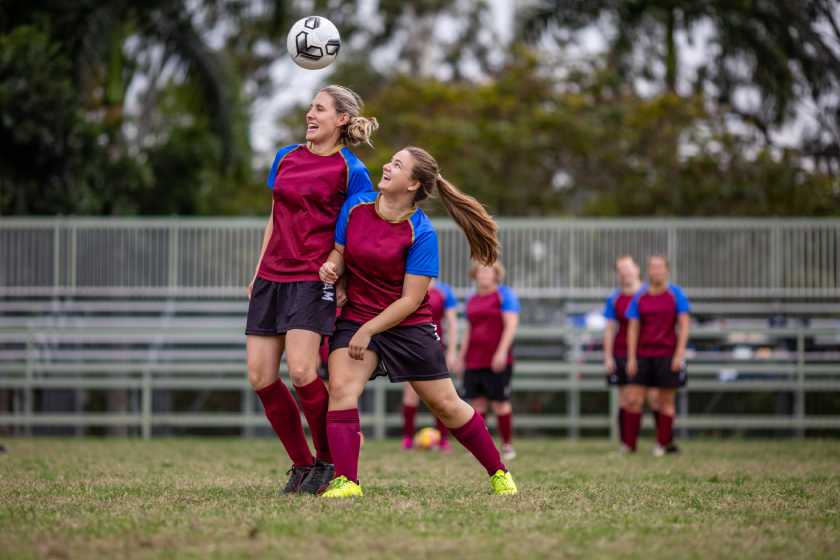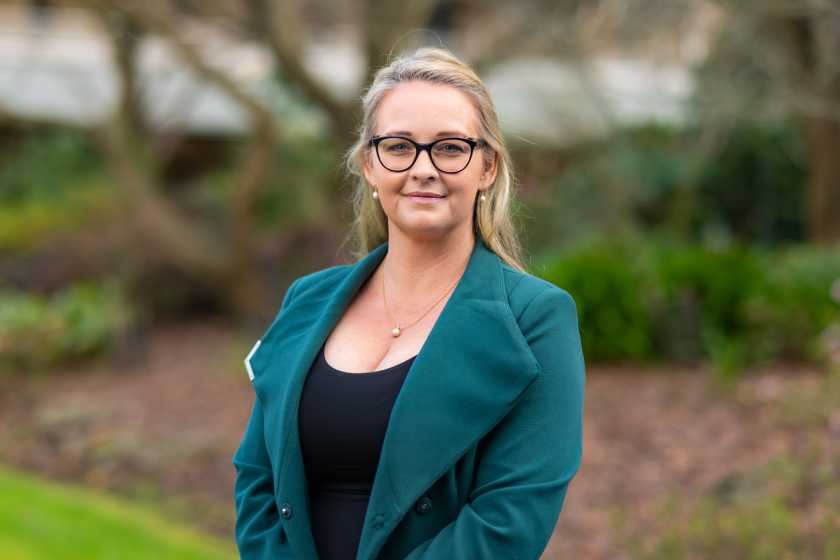This policy could make women's super more vulnerable to financial...
Australia’s opposition says early access to superannuation is an election policy for the party’s campaign. But...
READ MORE
The Australian Government will spend $200m to boost female participation in sport after the Matildas’ semi-final appearance in the 2023 FIFA Women’s World Cup. But it’s going to take a lot more than new female-friendly facilities to increase numbers.

Sport can play a powerful role in fostering healthy, prosperous, and positive outcomes for societies.
Being physically active goes beyond physical health, says Dr. Meghan Casey, Senior Lecturer in Sports Management at Federation University. It teaches motivation, teamwork, resilience, and other life lessons. It also provides unique social benefits for people, and it brings diverse communities together.
“It can be a key motivator for why people are active,” Casey says.
“If you look at the motivations for why people play sport, a lot of it is around having fun and being with your friends. It’s a social opportunity.”
Yet, at adolescence, people start dropping out of their chosen sports. For women, the dropout rate is significantly higher than it is for men. Given that most sports have a lower female participation rate, the net result is that many women miss out on the health and social benefits.
In the wake of Australia’s powerhouse performance in the FIFA Women’s World Cup, questions are being asked about how to use the excitement from the event to help remedy this participation problem.
One feature of the discussion that has loomed large is how to best spend the $200 million funding package for women’s sport that Prime Minister Anthony Albanese announced.
“The Matildas have given us a moment of national inspiration,” Prime Minister Albanese said.
“This is about seizing that opportunity for the next generation, investing in community sporting facilities for women and girls around Australia.”
Minister for Women Katy Gallagher said you can’t be what you can’t see, and women and girls in this country have seen that they have a place in sport in this country.
"Too often, women and girls are changing in men’s bathrooms, wearing hand-me-down boys’ uniforms, playing with men’s equipment on poor fields that boys teams wouldn’t train on,” said Minister for Sport Anika Wells.
The Play Our Way grants program will govern the investment of the $200 million. It promises the funds will be used to promote equal access, build more suitable facilities and support grassroots initiatives.
But $200 million is unlikely to be enough to build facilities across Australian sportsgrounds. Researchers focusing on women’s sport, such as Dr. Alana Thomson, Senior Lecturer in Sport Management at LaTrobe Business School’s Centre for Sport and Social Impact, hope there is some funding left over to break down the real barriers to female participation in sport.
“I fear that if we build these beautiful facilities, unless we’re also changing the culture and management within clubs, we may not see the increases in participation that we want to see,” Thomson says.
“At some point in the future, we may turn around and realise we’ve built all of these female-friendly facilities for women, but it hasn’t been matched by increases in female participation. There is a risk of these facility investments not benefitting those they were intended for – women and girls,” she says.
Thomson has spent many years around sporting clubs, conducting research and building knowledge about event legacy, gender equality in sport and equal access to participation.

Dr. Alana Thomson
She says that women at the elite level of sport have player associations and their celebrity status which helps advocate for fairer pay and other conditions (although a recent open letter from the Wallaroos to Rugby Australia reveals there’s still a very long way to go).
But for women and girls at the grassroots level, support can only come through their clubs, from committee members, coaches and managers.
“There are clubs that already have wonderful facilities,” she says.
“The issue with some of them is how the clubs are managed and how their culture is promoted.”
“What we’re talking about here is social and behavioural change towards gender equality in grassroots sport, changing how you show up to your club, changing how you manage your club, changing the questions you’re asking in your club and changing the expectations in your club. We want to see policy and rhetoric feeding into that.”
Casey says that there are many barriers to female participation in sport at a community level, including the fact that one in three women over 25 believe sporting clubs are not welcoming to them.
“Women perceive the club as being unwelcoming and have fears that women and girls won’t be accepted in the club,” says Casey.
“They feel like they don’t have the right skills to contribute to a club, or that they’ll be embarrassed, uncomfortable or intimidated.”
There is also the challenge of underdeveloped competition pathways in regional areas.
“If you look at a sport like soccer, there might be a girls’ team at under 12, and a senior women’s team, and nothing in between,” she says.
“So a 15-year-old girl would have to play in a team with boys.”
To avoid building facilities that are underutilised evaluation of the success of the funding program must be about more than the delivery of infrastructure.
“Sometimes, what gets promoted back to the public is information on what was delivered, but we fail to follow up with what was actually achieved,” Thomson says.
One promising sign is a new Victorian Government policy.
“In Victoria, by the end of next year local governments have to have fair access policies in place to be eligible for funding for facilities,” Casey says.
“That sort of policy needs to filter throughout Australia if money is going into facilities for women and girls, so we can make sure the people they’re intended for will benefit from them.”
“We also need to get better at calling out the gender bias in sport,” Casey says.
“We need to call out some of the undesirable values and behaviours that devalue women and girls in sport, particularly harassment or discriminatory language that might be used on the sidelines.”
“Is building a new toilet block going to change that?” Thomson says. “The evidence says the facilities are only one piece of the puzzle and there is much more needed if we want to encourage more women and girls into sport.”